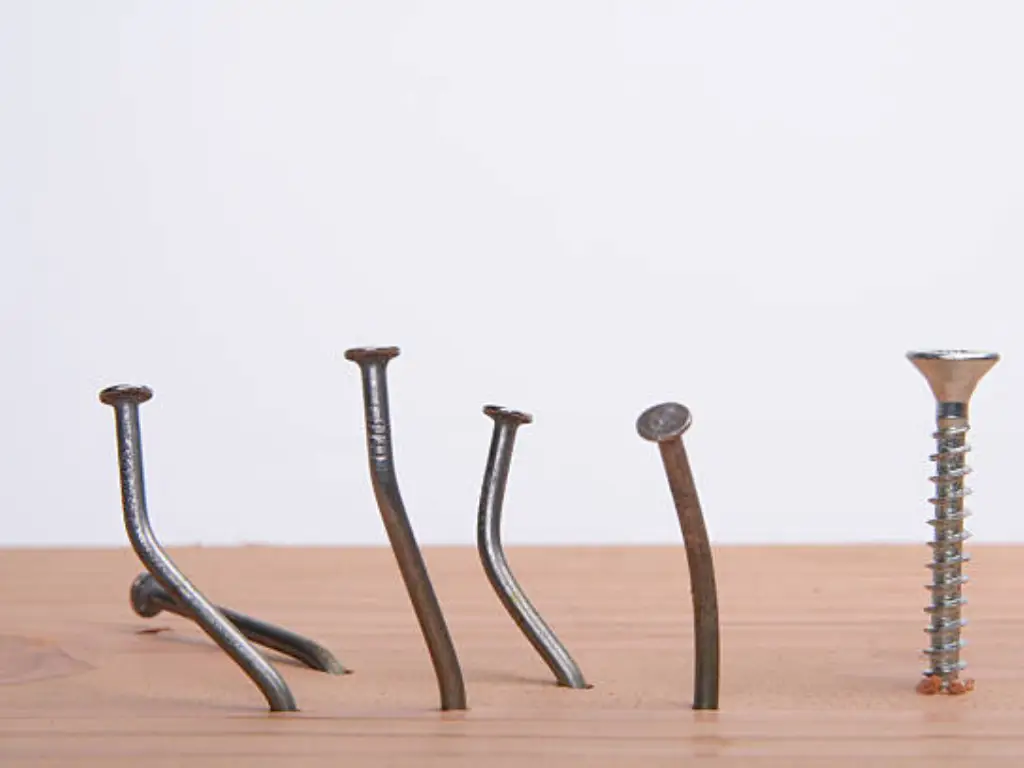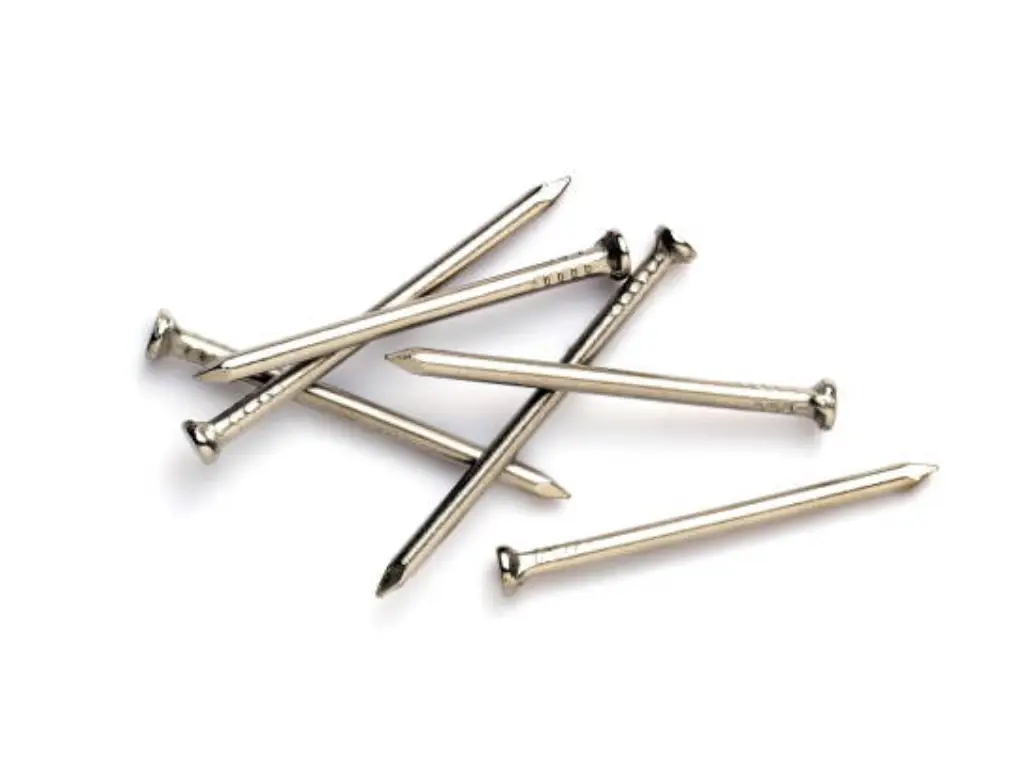Introduction
When it comes to fixing, whether in home improvement or construction, screws and nails are two of the most common fasteners that are used, and the decision between the two is one of the most important decisions that will determine the ease of installation and the durability of the work done. Screws are preferred for their holding power and pull out strength, which makes them suitable for use in holding materials such as wood and metal firmly. It has a threaded shaft and is available in a range of head styles to suit specific tasks. On the other hand, nails are used because of the fastening speed, especially where the construction is rough or where the construction is temporary. They have high shear strength and are easy to use with simple tools such as hammers or nail guns because of their thin shafts and polished heads.
Every type of fastener has its own properties that are appropriate for certain applications. No matter if you are using fasteners for installing hardwood floorings or for constructing exterior walls, it is important to understand these differences to select the right fastener and to guarantee the success of your project.
Tensile Strength: Screws vs Nails

When you have screws and nails to compare, tensile strength discussion is very important. This makes them the preferred fastener for structural fastening in projects like cabinetry or furniture parts because screws excel in environments where high tensile strength is required to withstand vertical forces. There is little risk of breaking and bending when stress comes on tightly held wooden pieces due to their design. On the other hand, nails are more likely to bend because they have a higher shear strength and are best used in situations where lateral or sliding forces such as in sheathing or roofing are more pronounced.
The reason why screws have a better grip is that threads engage more material compared with the plain shaft of a nail. This makes them an excellent choice for decking and framing where durability of the fastening is important as these bonds are stronger than ordinary ones that can come loose over time. Nonetheless, nails can be used as alternatives since they take less time to install hence making them economical especially during construction involving huge sets of work or those involving temporary structures which may not concern themselves too much about ultimate tensile strength.
| Feature | Screws | Nails |
| Primary Use | Cabinetry, furniture parts | Sheathing, roofing |
| Strength Type | High tensile strength for vertical forces | High shear strength for lateral or sliding forces |
| Risk of Failure | Low risk of breaking or bending | More likely to bend |
| Design | Threaded shaft engages more material | Plain shaft |
| Ideal For | Environments requiring durable, strong fastenings | Projects where quick, economical installation is key |
| Advantages | Better grip, less likely to come loose over time | Faster to install, economical for large projects |
| Applications | Decking, framing | Temporary structures not focused on tensile strength |
When to Use Screws Over Nails
Hardwood Flooring
Such projects like hardwood flooring in regards to construction quality, which can affect both functionality and beauty; screws are usually the better option. With time, natural expansion and contraction of wood due to humidity changes may cause nails to become loose. Conversely, screws are made in such a way that they can still hold tightly despite this movement resulting into a more stable and long-lasting floor. A screw’s ability to be adjusted or removed with minimal damage is also important when it comes to repairs or renovations making it a more adaptable and dependable option for flooring projects.
Deck Construction

The choice of fasteners in the construction of a deck determines how long it lasts and how safe it is. Screws are more ductile compared to nails, as they can resist vertical and horizontal forces generated by people walking on decks and weather effects. Deep threads ensure that screws hold wood firmly thus minimizing chances of boards becoming loose or warping over time. During initial framing, nails could be used because they are fast; nevertheless, for areas taking heavy loads or needing precise alignment, screwing is usually recommended to guarantee secureness and durability of the building.
Temporary Structures and Quick Fixes
Where speed is more important than durability, as in building of temporary structures or emergency repairs, nails are favored over other fasteners. These can be quickly and easily driven in with a hammer or nail gun, making them perfect for fast construction. In determining whether to put up staging for an event or mend fences where long-term stability is secondary, nails serve well and cost less. They can be driven in large numbers within a short period, hence their appropriateness in projects whereby rapid assembly takes precedence over permanent bonding.
Furniture Assembly
Furniture construction is often required to have very tight joints that can withstand everyday stresses. In furniture parts which are moving or stressed regularly, like chair legs and cabinet hinges, screws are used more frequently for their better-joint strength which makes them less likely to slacken. Nails may be used on the back panels or in places where aesthetics matter more than the structural integrity; however, for areas which need strong building, screws are the best option because they have greater holding power and can also endure repeated use.
| Application | Preferred Fastener | Reasons for Preference | Considerations |
| Hardwood Flooring | Screws | Accommodates wood movement, adjustable, minimal damage during removal. | Ideal for long-term durability and maintenance. |
| Deck Construction | Screws | Provide greater tensile strength, resist vertical and horizontal forces, reduce warping and loosening. | Necessary for structural integrity and safety. |
| Temporary Structures | Nails | Quick and easy installation, cost-effective for short-term use. | Used where speed of assembly is crucial. |
| Quick Fixes | Nails | Fast application with minimal tools, suitable for non-structural repairs. | Efficiency over long-term durability. |
| Furniture Assembly | Screws | Stronger joints for areas under frequent use, can handle stress without loosening. | Essential for durability in functional furniture. |
Costs: Screws vs Nails

The cost factor matters significantly in the preference of nails over screws. Generally, nails are less expensive when dealing with huge projects as they have simple manufacturing processes and are easy to apply. The tools needed for their application do not require any power supply hence can be hammered into place within a short period saving time and resources during large scale operations such as framing and sheathing. However, these benefits must be carefully evaluated against the fact that nails used where it would be better to use screws may need repairs or replacements in the future.
Usually, screws although more costly initially are cheaper in the long run particularly for highly durable and force resistant projects. Its employment helps in avoiding structural failures as well maintenance problems translating into savings with time. Furthermore, their reusability together with how little damage they cause on materials once detached is an aspect that makes them financially viable under various circumstances too.
| Feature | Screws | Nails |
| Cost Range | $0.05 – $0.20 per screw | $0.03 – $0.06 per nail |
| Initial Cost | More expensive initially | Less expensive |
| Long-term Cost | Cheaper in the long run, due to durability and reusability | May require replacements, potentially increasing costs |
Installing Screws and Nails
For any building or home improvement project, it is important to install screws and nails properly. For instance, screws are driven into the material using power tools such as electric power tools or hand screwdrivers. The right amount of force and depth can be achieved by selecting the appropriate screw heads and types such as trim screws or structural screws. Correct installation ensures that they have got the maximum tensile strength and grip strength hence being best suited for structural fastening and permanent installations.
On the other hand, nails may be installed with a simple hammer or pneumatic nail gun, which makes them faster in using especially where large projects are concerned. Nails for example have to be selected depending on their types like ring shank nails or smooth heads used depending on what type of work one is doing. In fact, nails are more likely to “head pop” when materials shrink and expand naturally over time particularly in open air or areas exposed to water. Although it takes less effort and time to install nails than screws, this does not always make them reliable enough.
| Aspect | Screws | Nails |
| Installation Tool | Electric power tools, hand screwdrivers | Hammer, pneumatic nail gun |
| Installation Speed | Slower, requires careful application of force and depth | Faster, suitable for large projects |
| Types | Trim screws, structural screws | Ring shank nails, smooth head nails |
| Key Benefits | Maximum tensile strength, grip strength, suited for structural fastening and permanent installations | Easier and faster to install, but may not always be reliable |
| Common Issues | Requires correct force and depth for effectiveness | Prone to “head pop” due to material shrinkage and expansion, especially in open air or moist areas |
Fastening Technology: Screws vs Nails

The development of fastening technology has greatly improved the capabilities and usages of screws and nails, making them more efficient and suitable for many kinds of jobs. For instance, modern screws have advanced characteristics such as flat small heads that cannot be seen and big threads that provide a good grip on surfaces thus enabling them to handle forces acting in both vertical and horizontal planes. Hence they can be used from delicate inside moldings to solid outside decks.
Similarly, nail technology has changed with options like stainless steel nails becoming available which are rust proof for outdoor or humid areas. Besides, the application process has been streamlined through innovations in nail gun technology thus allowing for quick delivery of large nails accurately. Therefore, these improvements in technology help screws and nails to continue being important components of construction industry and home improvement projects; both have separate merits which can be exploited depending on the kind of project at hand.
| Feature | Screws | Nails |
| Material Advances | Advanced with features like flat, small heads and big threads for better grip. | Options such as stainless steel nails for rust-proof qualities. |
| Application Areas | Suitable from delicate inside moldings to solid outside decks. | Useful for outdoor or humid areas due to rust resistance. |
| Installation Tool | Typically installed with power tools for precise application. | Nail guns allow for quick, accurate delivery of large nails. |
| Efficiency | Handle forces acting in both vertical and horizontal planes. | Streamlined application process through nail gun technology. |
| Ideal Usage | Good for both delicate and heavy-duty structural applications. | Fast application in large-scale projects and harsh environments. |
Durability: Screws vs Nails
Durability is a primary factor you should consider when determining whether to use screws or nails. They are built much better than it and can go deeper into the material. The nails, on the other hand, may come loose with time which is more serious in structure applications where life and safety are considered first. In locations that experience high wind velocity or seismic activity their resistance makes them indispensable.
Nails, however, provide faster installation but have less strength. In future this may cause problems with structural integrity due to looseness of nails caused by high pressure or vibrations. Nevertheless, some types of nail heads such as ring shanks or spiral shanks form grip and can be used effectively for applications demanding shear over tensile strengths. The right selection of a nail type based on specific conditions and project requirements will help optimize its performance.
Conclusion
The choice between nails and screws is mostly determined by the needs of your type of project, such as how long you want it to last, what types of forces it will be subjected to, and the materials being used. Screws, recognized as excellent fasteners, are better at resisting shearing and tensile loads, have greater durability, and can be adjusted easily; therefore, they are designed for high-stress applications and for jobs that require fine details. Nails, on the other hand, do not take much time while fixing temporary structures or construction projects whose shear strength is sufficient.
To make an informed decision, one must eventually understand each type’s different characteristics, unique benefits, and their reaction to different environmental stresses as well as project demands. By selecting the right fastener when building a deck frame or installing cabinetry, the stability and safety of your project along with its aesthetic integrity and longevity will be guaranteed. Take caution to observe all aspects of your projects so that you can determine whether screws or nails are likely to prove most helpful in it.






